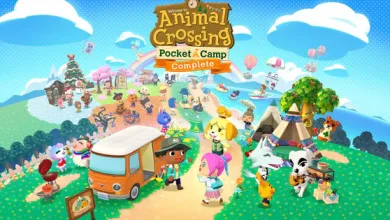The Legend of Heroes: Trails Through Daybreak Game Review – Game Review

The Legend of Heroes: Trails Through Daybreak is a phenomenal RPG that provides a strong opener for the next era in the series while also serving as an excellent starting point for newcomers.
The Legend of Heroes series—often simply referred to as Trails—is one with a storied history, in and out of the game’s narrative. In the real world, Trails awareness often comes in two flavors: it’s either your favorite franchise of all time and the specifics of the lore have replaced memories of your own treasured family like an invasive species, or it is looming over your head as a series you have been frequently peer-pressured into playing because you know someone who falls into the first category. As for myself, I exist in the early stages of terminal Trails brain rot—I’ve completed the first two titles (Trails in the Sky, first chapter and second chapter) and have enjoyed them but haven’t spooled up the third game just yet. That leaves me in an awkward position, sort of like reading the first 200 or so pages of War and Peace; I am aware of both the quality of what I’m already enjoying and the enormity of the task that still lies ahead of me. One of my fears in this review was that my limited knowledge would hamper my enjoyment of Daybreak.
Thankfully, Trails Through Daybreak is a very welcoming entry. This is the first game in a new arc and is setting up a new batch of characters to follow. Obviously, there are connections to prior games and characters, Easter Eggs to be found, and deeper lore to be appreciated. But nothing is hampering your enjoyment if you start with this as your first Trails title should you want to try the series here. While I think there is a lot to be gained by playing the older titles, there is something to be said for starting at a natural on-ramp in a modern title to see if the series matches your expectations.
The main tempo of the game is similar to many RPG titles on the market. You control the cast on an overworld or in various local areas, follow story beats, talk to NPCs, fight monsters, and the like. Dialogue is mainly pre-determined, but key choices can affect story outcomes or give you bonuses for following certain clues. Characters level up and adjust equipment, abilities, and so forth. In the broadest possible sense, it is not all that different from many other franchises, but the devil is in the details.
The narrative and characters clearly represent what the Trails series is about. I won’t get into too much detail, but the main draw for this series has always been its depth and interconnectivity. You will come to know Van, Agnes, Feri, and all the rest with an incredible amount of depth. This is because the Trails series has a lot of dialogue. I mean a lot. Nearly every interaction goes on for multiple exchanges; characters discuss their thinking or the ramifications of certain decisions, and the party will frequently provide their thoughts on a whole host of issues. This can lead to lengthy cutscenes and sustained dialogue between characters that would be considered excessive in many other games. But as fans will often tell you, the length and depth of detail is what gives the setting its charm. Complaining about the length of these sequences is like complaining about how wet the deep end of the pool is. That depth allows for intense immersion in the game world and an appreciation for the care with which everything has been constructed. The fact that all of these pieces fit together with an ongoing macro-narrative stretching across numerous titles only furthers that appreciation.
The mechanics are standard Trails, though with a few new twists. The basics are here – managing health and Arts, similar to magic/spells in other systems in turn-based battles with various enemies in overworlds and dungeons/enclosed locations. Arts are tied to the slotting of Orbs for each character, allowing multiple characters to use the same ability or for different cast members to specialize per the player’s wishes. The extra Trails sauce is the third meter for Crafts, which powers a host of character-specific abilities rather than gear-specific. These Craft points power up as the character takes other actions and carries across from battle to battle, allowing for unique abilities including turn-order-breaking special actions called S-Crafts. It all blends to create a comfortable system for RPG veterans without overwhelming newbies but has enough unique quirks to set it apart from other titles.
The big addition here is the ability to engage in real-time battles similar to many other action RPGs. The system exists alongside the turn-based battle system, which might seem odd at first blush. Essentially, you can attack and dodge while on the overworld but not use complicated abilities. Then, at the push of a button, you can initiate turn-based combat, and if you have done enough pre-battle attacks, you gain certain stun or extra damage effects. This creates a really engaging blend of combat and exploration. At times, you will do a bit of parry and riposte before landing a big stunning blow and then surging into the fuller combat system with a slight edge, while other times, you are in a hurry and just mash your way through smaller battles without having to go through the entire combat dance. It’s all relatively seamless and natural, feeling very refreshing to play.
The game had stellar and stable performance, too. Across the three platforms I tried it on, I experienced no issues or crashes to speak of, and while I did not test it for the PS4, I assume that given how the Switch ran it just fine, there probably won’t be any issues.
The only real caveats about the game are the voice work and the visuals.
The game looks terrific on PS5 and PC, but the Switch struggled a bit with clarity. That’s nothing surprising, given the relative capabilities of the hardware involved. Still, even as someone who tends to be more forgiving of the Switch because of its age, it was harder to focus for extended stretches in handheld mode (docked seemed better, but the larger screen didn’t help hide any flaws). There are also general aesthetics for the game, which are somewhat lacking, in my opinion. I understand that the more complex the characters, the more demanding it is to have them do things on screen, but it’s hard not to look at the character artwork and sigh wistfully by comparison. The in-game models look too much like porcelain dolls for my tastes.
There’s also the voice work situation. I think the voice work for both the Japanese and the English casts are really well done. There is a lot to voice here, and they give a wide range of performances that might be over the top in some places, but they never felt distracting or kicked me out of the moment. My big issue was that not all of the lines of dialogue were fully voiced, even within the same conversation. Given the sheer breadth of what is on offer here, I understand not being able to voice the entire game—that would be a ludicrous amount to have voiced and is a rare achievement only a handful of games have done. That said, there were times when, within a single conversation, some lines were voiced and others weren’t, creating weird pauses that took me out of the moment. I would have preferred for the entire conversation not to be voiced rather than have it cut in and out line by line, which I found more distracting.
That said, these are pretty minor quibbles for an otherwise strong title. The Legend of Heroes: Trails Through Daybreak provides a recognizable experience with enough freshness to help it stand out while welcoming newcomers and veterans back with open arms—a rare feat to be sure.
Source link
#Legend #Heroes #Trails #Daybreak #Game #Review #Game #Review



